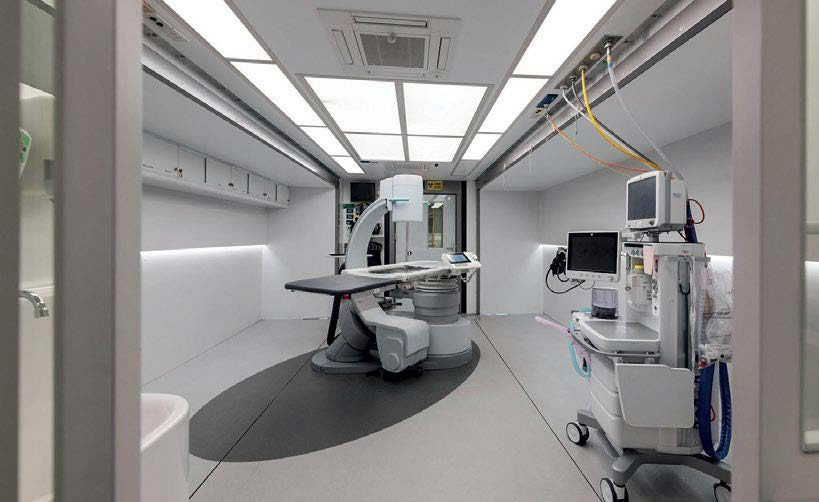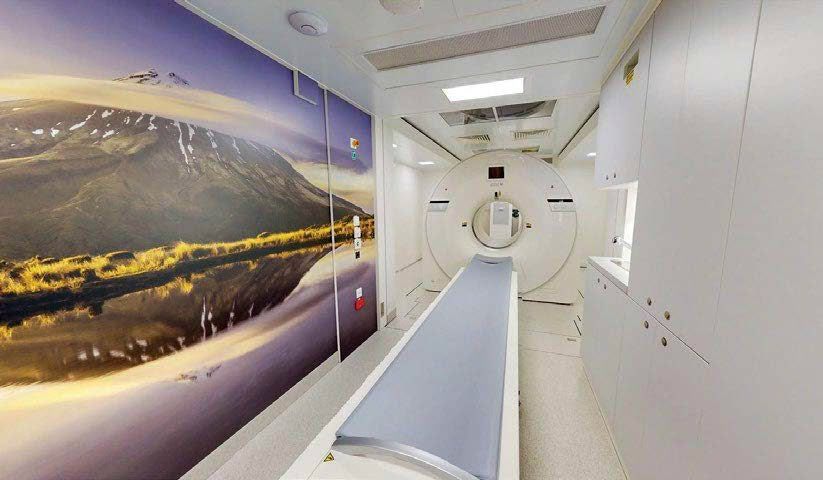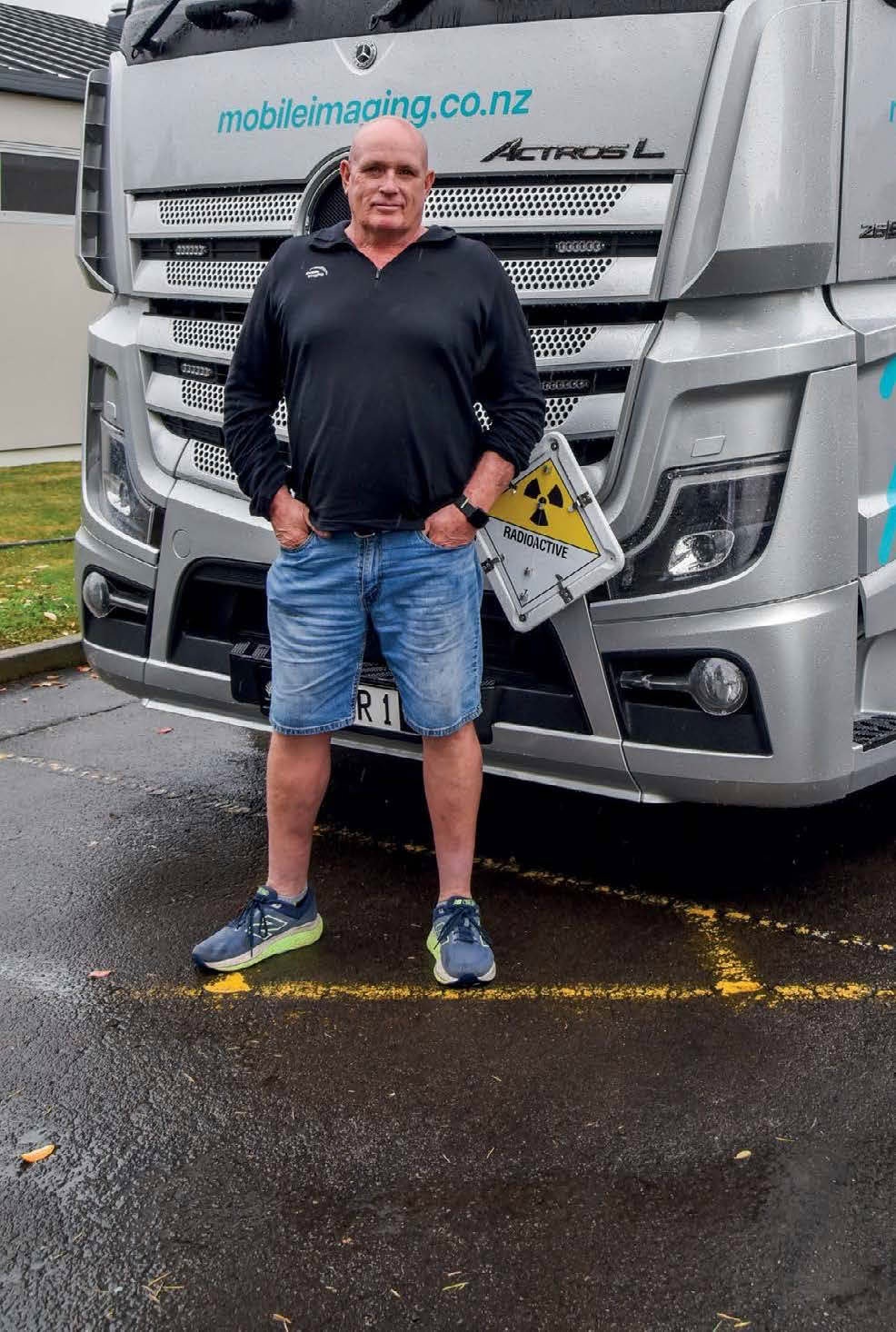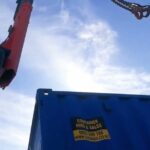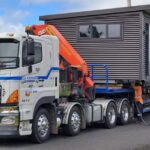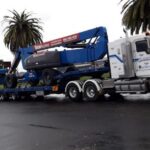Home | About Us | Services | Contact Us
Health on the move
Each week for more than two decades, the Mobile Health Group has been taking mobile health and surgical services to communities around New Zealand. We meet the people behind it all and the incredible units they operate.
UNCODE.initRow(document.getElementById(“row-unique-0”));
If you need minor surgery, a scan, or even your kidney stones blasted, you may be treated on one of Mobile Health Group’s specialised units towed around the country by a fleet of Mercedes-Benz trucks.
The group has mobile surgical, lithotripsy and PET-CT (Positron Emission Tomography for accurately diagnosing cancer) units. In early 2025, the service reached the milestone of 50,000 patients treated across all three services.
Mobile Health Group was founded by urologists Dr Stuart Gowland and Dr Jon Cadwallader, who initially trained as a veterinarian and later a doctor specialising in urology.
“It was because of the closure of hospitals in some rural areas,” says Mobile Health Group chief executive Mark Eager. “There was a need to continue offering services to areas where it couldn’t be justified to maintain a permanent operating theatre base. This was an attempt to not just offer the services locally, but also maintain the skill level of local medical staff.”
The founders recognised the need for a mobile lithotripsy unit shared by several regions because the machine to blast kidney stones was expensive equipment that wasn’t available everywhere.
“It’s a million-dollar machine. The ethos was to share it, but share it mobile, which is all about taking it around the country so all of their colleagues would get to use this piece of equipment rather than it sitting idle most of the time.”
A surgical unit was then proposed, which has been hugely successful, and finally, the mobile PET-CT scanner.
The surgical unit travels throughout New Zealand, regularly crossing between islands on the Interislander Cook Strait ferry. It is a category one over-dimension vehicle with a particularly long forward distance and overall length. It is also the most rural-focused service, visiting 25 remote locations. Despite its size, the unit only requires a pilot vehicle on a few sections of road, such as Tākaka Hill, Mt Messenger and Remutaka Hill. Accessing tight hospital car parks is achievable due to steering assistance on the trailer, which enables the wheels on the three axles to be steered up to 30°.
“It’s a big unit, so getting around places like Hawks Crag [Buller Gorge] to get over to the West Coast is very tight.”
The PET-CT unit is the first in Australasia focused on delivering these services to patients in their local community. It operates on a fortnightly rotation, spending one week in the North Island and one week in the south.
Mark says five drivers work on the three vehicles: Gavin Hurring, Jim Wilson, Doug Grant (Sausage), Rodney Turkington and Greg Wood (Woody). The first three are based in Christchurch, Woody near Levin and Rodney at Papamoa.
“We refer to them as ‘steerologists’ because the driving is only a small part of the job, maybe 10%, and the drivers are an integral part of the team. Sometimes, they’re doing the catering, and there’s the health and safety stuff that they’re dealing with as well. There are a whole lot of things to think of in the whole process, and they’re dealing with surgeons all day, every day as well. It’s not your typical driver’s wheelhouse, really, is it?”
Mark says the drivers write regular reports, and he quotes one Woody provided when he was at Ropata Health in Lower Hutt.
“‘While a reasonably quiet day as far as patients go… once in a while, we get a patient who’s not dealing with the news that he’s had … We don’t always get the best news in life, and it’s up to the individual how they deal with it. This man was scared, hurt and angry. It impresses me how professional the team is, that they didn’t bite or react, were not rude, just carried out their job. We can only imagine the fear that this man had. Just happy to be on the unit, just as the driver, anyway.’”
“But he’s not just the driver. I think that’s why we employ these people, the fact that a driver, as part of the team, could have the empathy for patients like that. I’m very proud to employ people like that.”
Operations manager Dave Withell says the tractor units are kept for as long as possible because of the high level of customisation for the steering. Although the original truck towing the surgical unit went through three engines in its lifetime, the futuristic-looking 2001 Freightliner Argosy (featured in New Zealand Trucking in November 2017) did an impressive 20-year stint. Five years ago, it was replaced with a 2020 Mercedes-Benz Actros 5 6×4.
“We only do about 50,000km per year on each vehicle. In trucking terms, that’s low, but we need that longevity because of the customised gear, which can add another $100,000 to the cost.”
Mercedes-Benz was also the choice for the other two units: the lithotripsy unit has a 2022 Mercedes-Benz Actros 5 4×2 and the PET-CT unit a 2023 Mercedes-Benz Actros 5 6×4.
“Because our drivers go between the multiple vehicles, we wanted to have the same unit. It’s pretty unusual to have a 4×2 European over here, but we wanted to offer our drivers the same experience as in the larger tractor units. There’s a limit to how much we can adapt some of these European ones, unfortunately. The one on the surgical unit has got a live-drive hydraulic system and a touch screen for controlling trailer steering when getting into some sites, and that was quite a complex customisation as well.”
“The original surgical unit trailer was built by Mills-Tui in Rotorua in 2001. When the tractor unit was replaced, it was all done in-house or with some of our suppliers. We’ve got a wireless network connection through to the trailer, and a PLC unit computer running on the trailer so it can be steered.”
A new surgical unit has been ordered, with the build expected to get under way by the end of 2025 and will take about 12 months. It will replace the current surgical unit, but that won’t be retired. Instead, it will do a different run that won’t involve as much travel.
“There are some Dutch off-the-shelf steering systems that we’re looking at for our new unit because they’ve developed it another level again.”
Green alternatives are being considered for the future, but Dave says at this stage, they don’t offer the weight capacity the service needs.
“We’re certainly open to new technologies – looking at possibilities for the future – but our semi-trailers are heavy; we’re on overweight permits. The electric ones would mean we’d be heavier again, and that would be costly and difficult, and possibly not even allowable.”
Mobile air-conditioning firm Forestaire Automotive Climate Specialists built the lithotripsy unit in Rotorua.
“These guys have been amazing over the past 25 years or so maintaining our units,” says Mark. “And when we have anything major happen, they just drop everything and run around the country to help us out.”
Dave says the scanner unit was built overseas purely because it had very specialised requirements for a mobile PET-CT scanner, and it was easier to use a company that had built many of them before.
UNCODE.initRow(document.getElementById(“row-unique-1”));
UNCODE.initRow(document.getElementById(“row-unique-2”));
Top right: The mobile medical unit’s control room, including the lead shielding glass in the doors through to the treatment room. Top left: The mobile medical unit expanded, showing the lithotripsy machine and anaesthetic machine (right). The lines on the floor show the actual vehicle width when travelling. Bottom left: Mark Eager, Mobile Health Group chief executive, alongside the mobile surgical unit at the group’s Christchurch head office. Bottom Right: The PET-CT scanner in the mobile imaging unit.
UNCODE.initRow(document.getElementById(“row-unique-3”));
UNCODE.initRow(document.getElementById(“row-unique-4”));
“It’s a Dutch company called Lamboo, and they specialise in building mobile units similar to ours, mainly mobile CT, mobile MRI and PET-CT. They’ve got a state-of-the-art factory, one of these comes off their production line every week. They are used extensively around the world, but this is the first one they’ve built for the southern hemisphere.
“Building that was quite a project as well. It’s heavy – despite not being very long – because it’s lead-lined. The weight combination for that one is 44 tonne – 34 in the trailer and 10 for the tractor unit. It’s our heaviest unit – but not our longest – because of the lead shielding. What’s interesting is that it’s a tri-axle semi-trailer, but the third axle is automatically steered with the kingpin position. When they turn the corner, the third axle will steer accordingly. And that makes quite a difference to getting into sites and reducing tyre scrub and all sorts of things.
“But the mobile surgical unit’s ability to manually control all three axles is still by far the best that we’ve got because we can crab into sites. We can do whatever it takes because it almost goes sideways.”
The surgical unit does a five-week cycle – three weeks in the North Island and two in the south. The lithotripsy unit does a four-week cycle, typically three in the north and one in the south. The PET-CT unit is on a fortnightly cycle, one week in each island.
Mark and Dave say the logistics of getting the units between the islands can be challenging.
“The surgical unit is limited to which ferries it can go on because it is over-dimension and it’s pushing the boundaries of clearances and such. It’s very difficult to get on several ferries. The lithotripsy unit is fine because it’s a fairly conventional configuration,” says Dave.
“The PET-CT unit has the additional challenge because it carries some radioactive sources that are used for calibration, and as a result, is limited to only the Aratere and only particular sailings because it has a restriction as a dangerous goods vehicle. The ferries are just part of the challenge of operating the service.”
Upon arriving at each site, the driver has the task of parking the unit with precision to maintain ease of access to the unit, to not obscure traffic or access to surrounding buildings, and to be within reach of the cables required to provide electricity to power it during surgery.
“Everything we try and do is to make it as much like a bricks-and-mortar hospital experience as possible,” says Mark. “We get audited to the same standard as what a hospital does, so in effect, when we’re on the road we’re a truck, and when we’re parked up, we’re a medical facility, like a building. The air quality, the plumbing, the sterility; it’s got to be same as what a hospital is.”
Depending on the unit, between eight and 12 patients a day are treated. The types of procedures carried out on the surgical unit are classed as low-risk day surgery.
“We do a lot of paediatric or children’s general anaesthetic dental, as well as things such as a colonoscopy. The terminology we use is it’s simple surgery in complex places,” says Mark.
Health New Zealand funds the service and utilises local and regional medical staff when the units are in town.
“For the surgical unit, we use four local staff in every town we go to. We bring in a charge nurse, a recovery nurse, an anaesthetic tech, and then on top of that, there is a different surgeon and different anaesthetist every day,” says Mark.
UNCODE.initRow(document.getElementById(“row-unique-5”));
UNCODE.initRow(document.getElementById(“row-unique-6”));
Driving with Greg
Greg Wood has been driving trucks for 33 years and has worked for companies such as Regal Haulage, Hall’s and McCarthy Transport. He also had periods of self-employment, including running his own business with his wife Helen as a relief driver. At McCarthy’s, he held various roles, from driving a chip liner and relieving on logs and timber decks to working as a manager in Whanganui.
Woody says Helen has been working for Mobile Health Group as a dentist for about 20 years. When a driver was being sought for the scanner unit, a nurse who works with her suggested Woody.
“So that’s where it started. I’ve been here about three years now. They are very good employers; they look after all their staff really well.”
Woody shares the role with Rodney Turkington, who is based at Papamoa.
When he arrives at Crest Hospital in Palmerston North on a Tuesday, Woody has to back the unit into a car park off a narrow street.
“It has to be backed into the same place every single time because it’s been measured by a nuclear physicist, and it has to be five metres away from the next building. We have the same site plan every time, and once I’ve backed in, levelled the unit and set it up, I’ll turn the camera on. The techs come in that night and check the camera and do all their pre-checks. We start scanning patients at about 7.30am Wednesday, and we scan all day Thursday, too.
“On Thursday night, I head to Wellington, and I set it up at Ropata Health in Lower Hutt. We scan Friday, and that afternoon I pack it up. I get on the ferry and take the unit to Christchurch on Saturday morning and fly home Sunday. Rodney picks the unit up on Monday and takes it to Dunedin, where they scan Tuesday and Wednesday. On Wednesday night, he packs up and starts his journey north. He overnights on the way home but heads direct to the ferry in Picton. After a 10-hour break in Wellington, he drives the unit to Palmerston North on Saturday, plugs it into power at the yard the unit is stored at, and then flies home.”
The other three drivers do a week on the surgical unit, a week on the lithotripsy and a week off, whereas Woody and Rodney do a week on and a week off.
Woody says driving the mobile units is very different from driving a standard truck.
“You worry about damaging the unit, because it’s not something you can just go to TR Group and say, ‘Give us another mobile unit’. So we’re always conscious of that; it weighs on you quite a bit with how you drive as well.”
Woody says the scanner unit drives differently to the other units because of the weight of the lead-lining.
“It’s a shorter unit than the others, but because it’s lead-lined, it’s quite sort of sway-ey. So, once again, it changes your driving style, and we’re both well aware of it.”
Because the tractor sits so far back with the turntable, the front of the unit is quite a way out when turning in the bulkhead of the ferry, he says.
“We’ve got to back off twice, but a lot of guys do have to back off a couple of times. It does push our units right out, so when you straighten up, you come in quite close to the wall. But that’s where that rear-axle steer comes in handy. It does help out with that, but we have no more trouble than anyone else getting on there.”
Once the unit is operating, Woody assumes the role of an orderly.
“We go from setting it up and checking the generator and making sure everything’s all right to getting the staff lunch and acting as orderlies. In the morning, we’ll have a list of people with their scan times. The patients are cannulated in a sectioned-off room in the hospital.”
Woody says this is done because of the radioactive nature of the dye the patients are injected with.
“We don’t want everyone coming near it. We have to wear little Geiger counters and if they start going off, we’ve got to make some noise and let someone know. They basically said, ‘Keep punching distance away from people.’ But when it’s an old lady you’re helping up the steps, it’s a little hard!”
Woody enjoys his job, but says the reality of what the patients are dealing with is sobering.
“The hardest part about this job is – and my wife hates it when I say this – but when anyone goes on that blue [surgical] unit to get a tooth fixed or a minor surgical procedure, they’re coming out with that issue fixed. Anyone who comes on here has been sent here by specialists, so they’re in a bad way. That’s not wasted on us; it’s probably the hardest part about the job actually.”
UNCODE.initRow(document.getElementById(“row-unique-7”));
UNCODE.initRow(document.getElementById(“row-unique-8”));
The Trucks
THE8R1 – the surgical unit – is a 2020 Mercedes-Benz Actros 5 2663 6×4 and Mills-Tui trailer. It weighs 42 tonnes and is 2.5m wide by 20m long and 4.3m high on the road. This unit expands to 4.8m-wide when in use, offering a full-size operating theatre, complete with operating table and
theatre lights, anaesthetic services and a full theatre air quality system. There is also an onboard first-stage recovery room, along with instrument reprocessing facilities. The unit has been operating for 23 years and carries all the equipment and instruments required to perform low risk day-stay procedures.
BBBANG – the lithotripsy unit – is a 2022 Mercedes Benz Actros 5 1846 4×2 and Roadmaster trailer. It weighs 27 tonnes and is 2.5m wide by 15m long and 4.1m-high on the road. This unit expands to 4.8m-wide when in use. It carries a machine for breaking up kidney stones using shock waves – a Storz Medical SLX-F2 Lithotripter. Full anaesthetic services are available onboard, along with X-ray and ultrasound imaging to target the stones. The lithotripsy unit was operated out of a four-axle bus for the first 25 years, being replaced in 2020 with a truck and semi-trailer.
UNCODE.initRow(document.getElementById(“row-unique-9”));
SCANR1 – the PET-CT unit – is a 2023 Mercedes-Benz Actros 5 2663 6×4 and Lamboo trailer. It weighs 44 tonnes and is 2.55m wide by 17.5m long and 4.1m high on the road. This unit expands to 4.3m-wide when in use. It carries a United Imaging uMI550 Scanner, which can perform scans on patients using a radioactive tracer. There are two patient uptake rooms onboard, and this semi-trailer is particularly heavy due to lead shielding requirements. Launched in early 2024, this is the latest unit to go into service.
UNCODE.initRow(document.getElementById(“row-unique-10”));
The post Health on the move appeared first on NZ Trucking.


